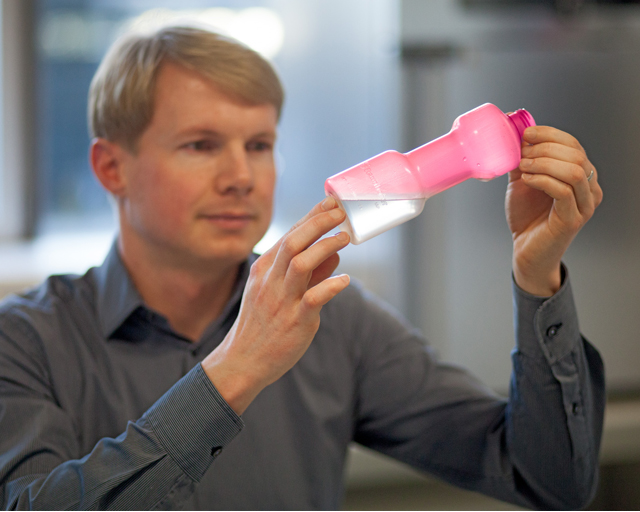Thermochromic bio-pigments from Potsdam-Golm
The Chromogenic Polymers department at the Fraunhofer Institute for Applied Polymer Research IAP has been conducting research at the institute’s main location in Potsdam-Golm since January 2017. The group moved from Berlin-Adlershof where it had been since 2002. The development of biobased thermochromic plastics is currently one of the department’s main research topics. These materials have a high market potential when used in films for packaging temperature-sensitive products in the medical, pharmaceutical and food industries.

Chromogenic materials change color or transparency depending on temperature, electrical voltage, pressure or exposure to light. In thermochromic materials, a pre-determined temperature change triggers this change in color. For example, in the food industry, thermochromic packaging can reveal whether the refrigeration chain has been interrupted. The temperature-sensitive additives used in this application are currently only available on the market as oil-based pigments.
"In particular bioplastics – which will play a major role in day-to-day life in the future – lose their bio-based status when commercially available thermochromic dyes are added. Our department has already demonstrated that the idea of thermochromic bioplastics can work. This is why we would like to use renewable raw materials when developing these materials for various applications," explains Department head Dr. Christian Rabe. The move to Potsdam-Golm enables the eight-person team to profit from the 25 years of expertise at the Fraunhofer IAP in the area of biopolymer research, and to take advantage of synergies. These relate to the access to technologies and characterization methods, as well as a more intensive exchange of knowledge with members of the "Biopolymers" research division.
In addition to integrating thermochromic effects into biopolymers, the department Chromogenic Polymers, at its new location in the Science Park in Golm, is currently focusing on the development of particularly stable electrochromic windows for architectural applications or boat-building, and irreversible thermochromic packaging films.
Last modified: